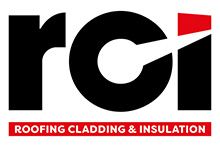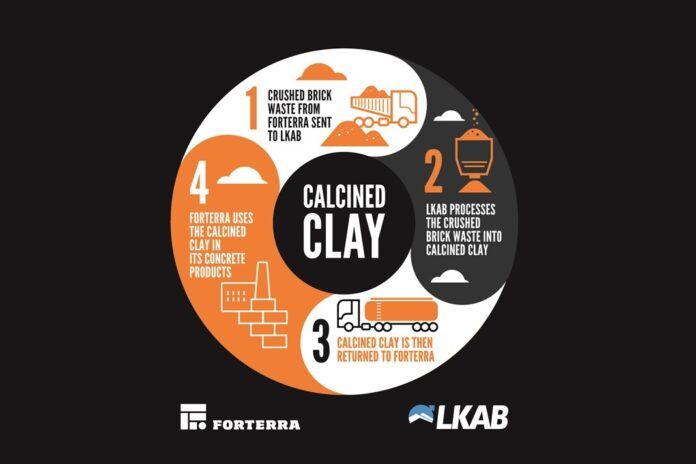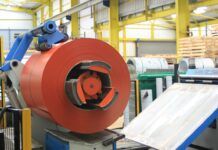Forterra announced that it has partnered with LKAB Minerals to reduce carbon emissions by repurposing crushed brick waste to produce calcined clay as a low-carbon alternative to traditional cement.
A company statement said that calcined clay, derived from recycled brick waste, can be used as a cement replacement known as a Supplementary Cementitious Material (SCM) in accordance with the cement standards. It brings several advantages, it noted, one of which is that SCM contributes to the concrete’s strength by increasing the strength-producing compounds and in doing so reducing the porosity of the concrete.
Conventionally, calcined clay is produced by heating raw clay at temperatures of between 700 to 800°C to drive off volatile compounds like water and carbon dioxide, a process called calcination. However, the statement added that the combustion process is emissions heavy, resulting in high embodied carbon. Forterra said its approach avoids the high-temperature calcination process: the waste bricks have already been fired and the carbon accounted for. The embodied carbon of the final product is significantly reduced, it cited, and the entire process contributes towards a circular economy.
To produce the calcined clay product, brick waste from Forterra’s Kings Dyke factory is crushed and delivered to LKAB Minerals, who then fine-mill the waste to an agreed specification, processing it into a reactive calcined clay material. Fonterra stated that initial use of the calcined clay at one of its aggregate block plants in 2024 has resulted in a significant emissions avoidance of approximately 2,000 tonnes of CO2.
Forterra and LKAB Minerals stated that they will collaborate to manufacture approximately 35,000 tonnes of calcined clay per year.
Neil Ash, chief executive of Forterra, said: “Forterra is proud to be the first in the industry to commercialise the use of calcined clay as a sustainable, low-carbon cement alternative.
“We’re ambitious in our targets to reduce CO2 emissions within our operations and value chain, so being at the forefront of innovations such as this partnership shows the level of our aspirations, while also underpinning our commitment to the environment.
“Leading the way in sustainable and circular industry practices allows us to reduce our emissions and add value to our business. But it also has wider benefits. By offering high-quality, low-carbon products, we help to reduce the embodied carbon in construction, cutting emissions across the industry as a whole.”
Forterra stated that the calcined clay partnership is part of a broader strategy to meet the company’s environmental, social and governance (ESG) targets, including a 32% reduction in carbon emissions by 2030.




